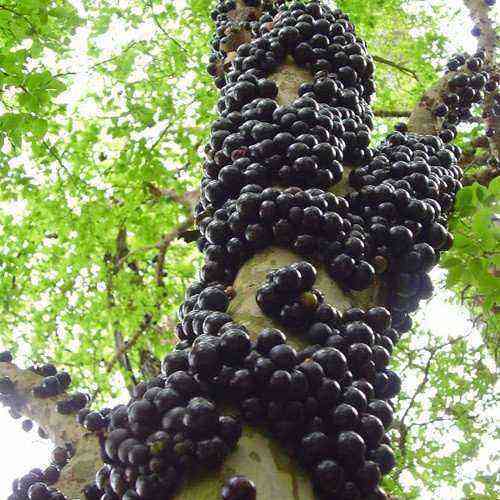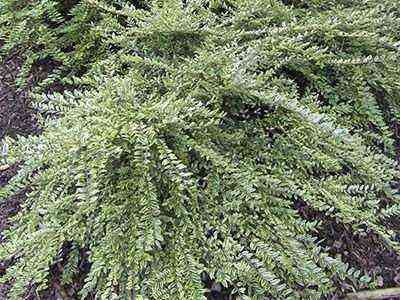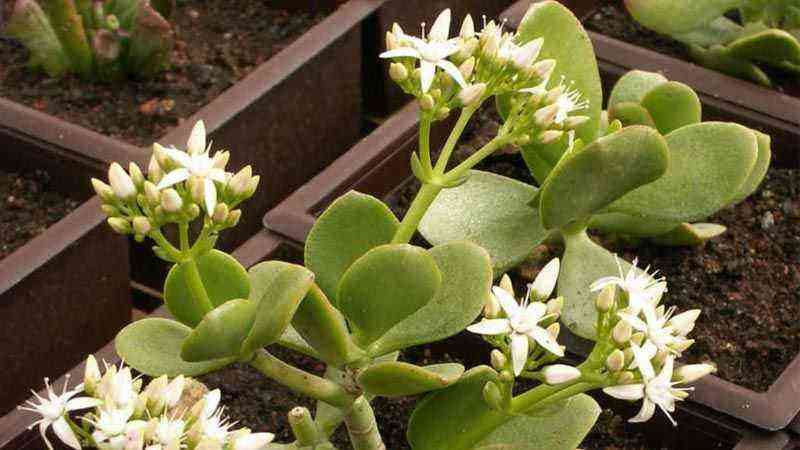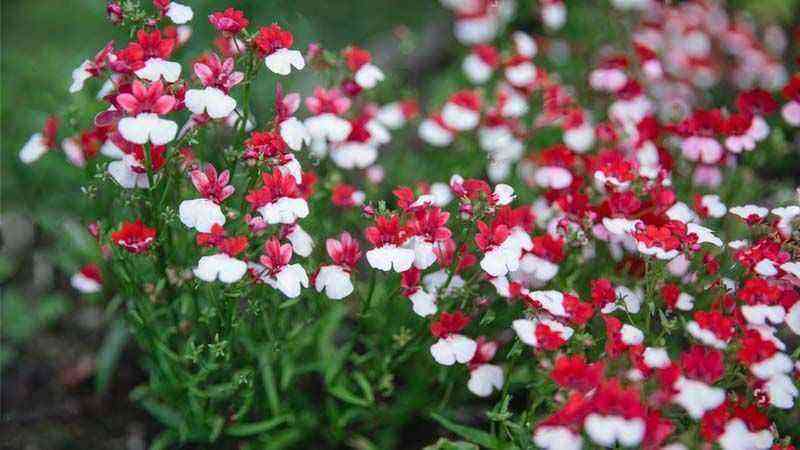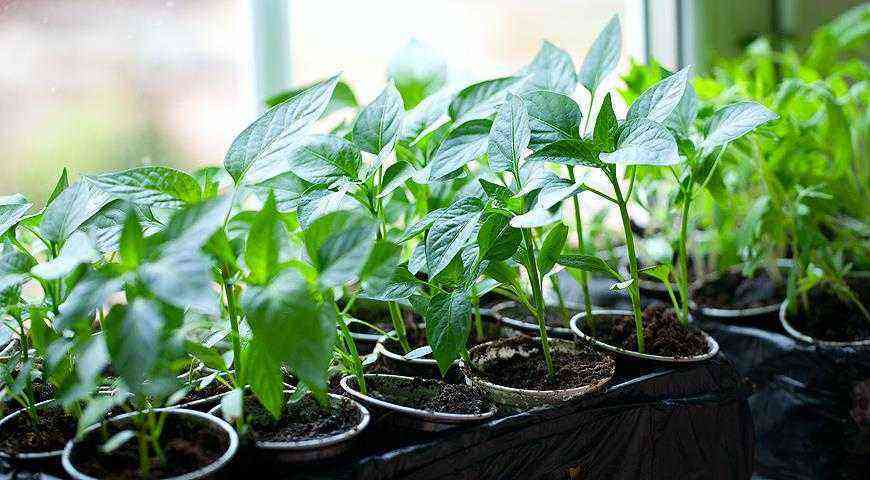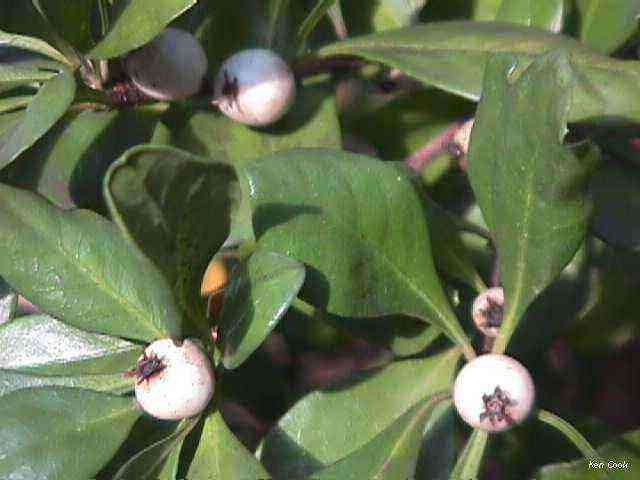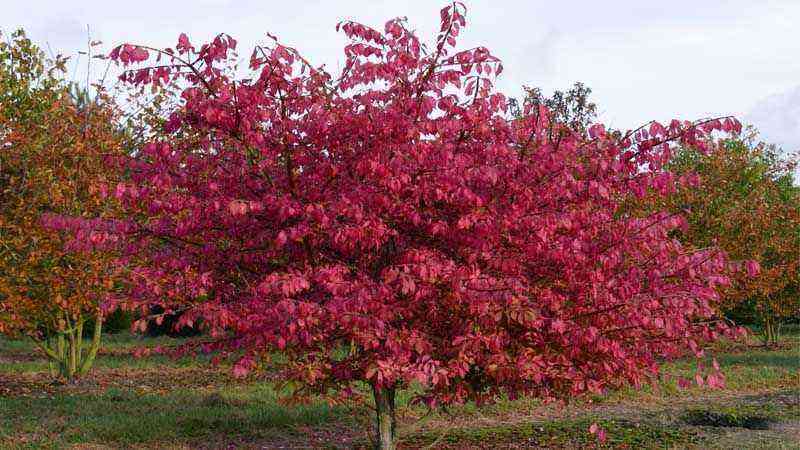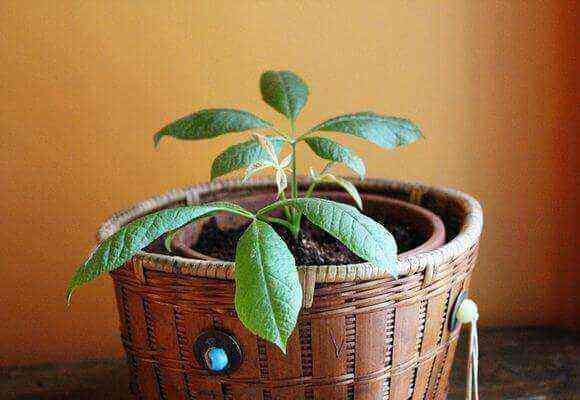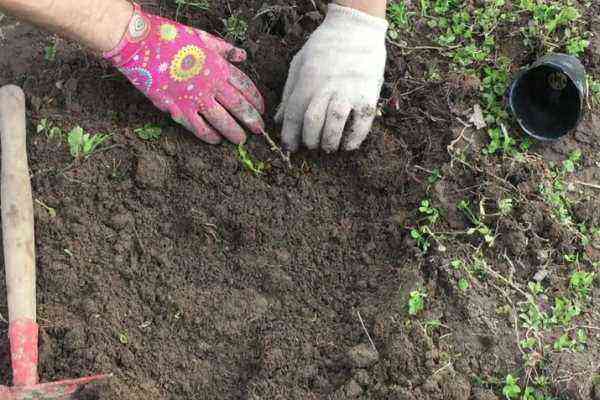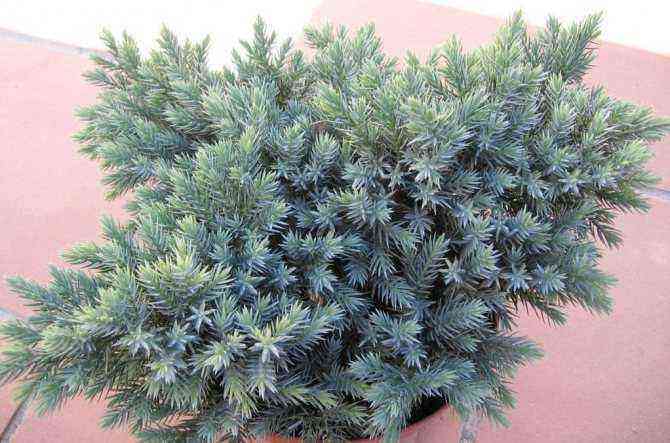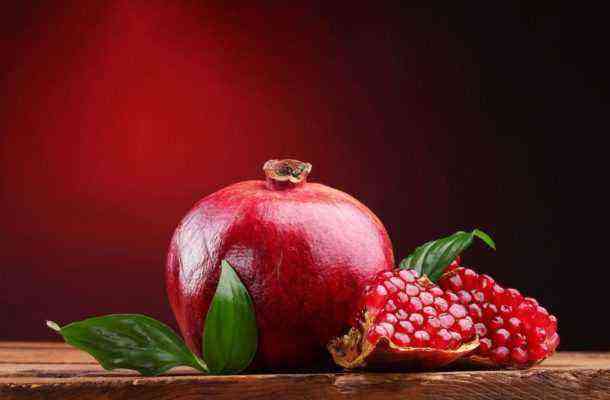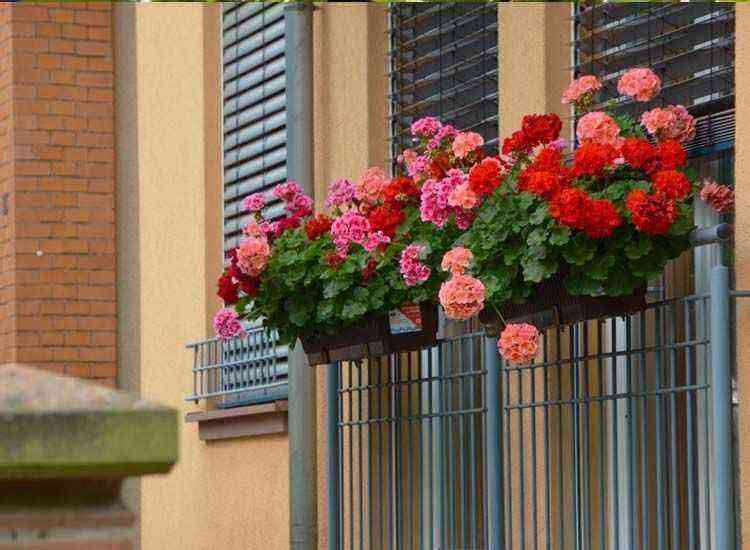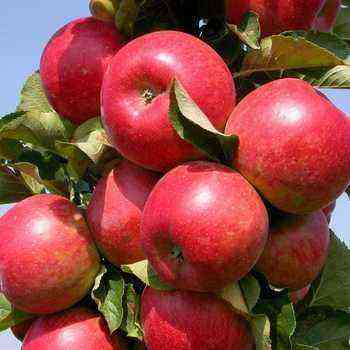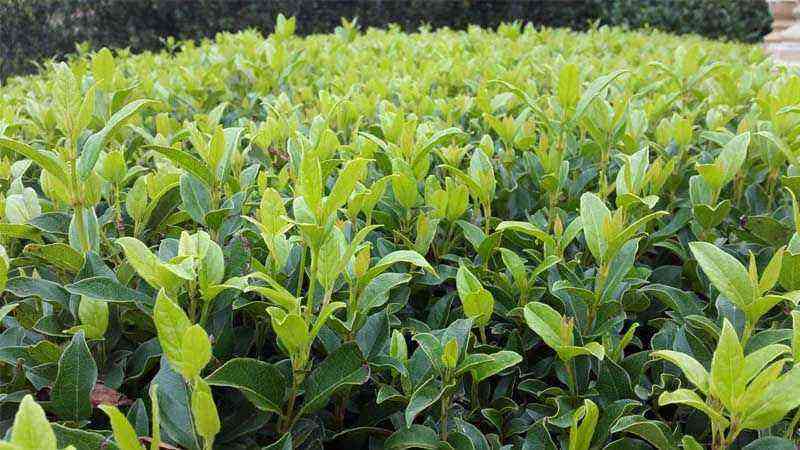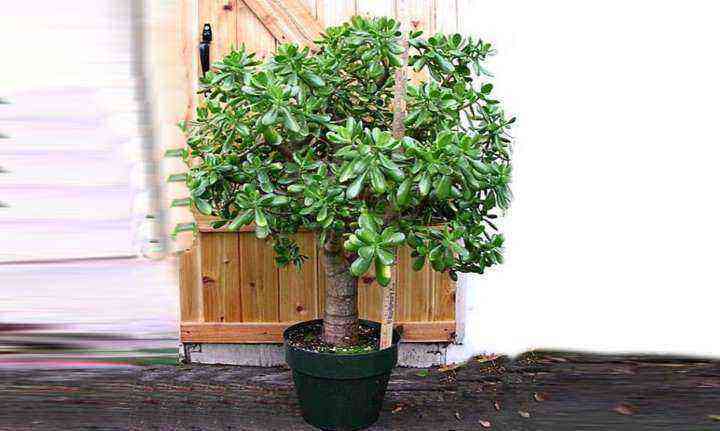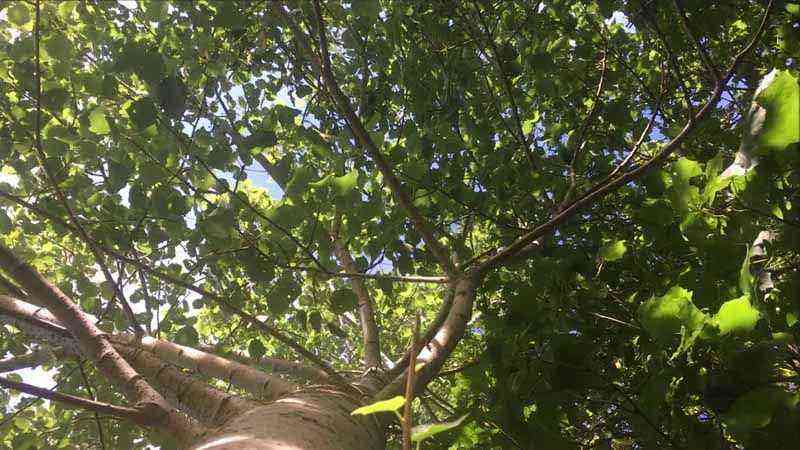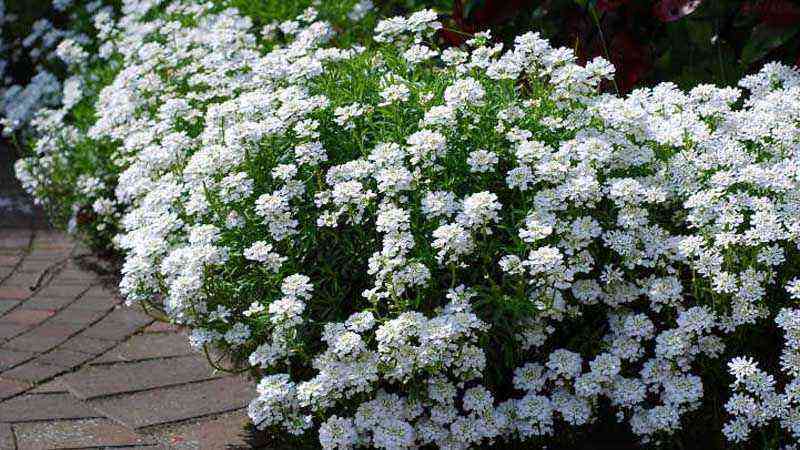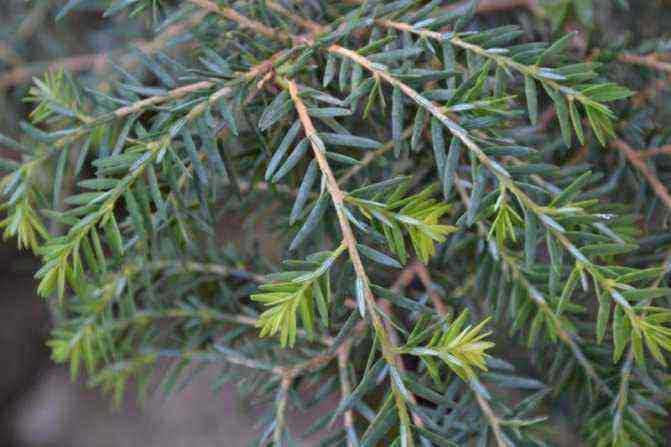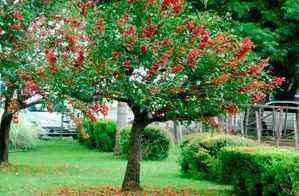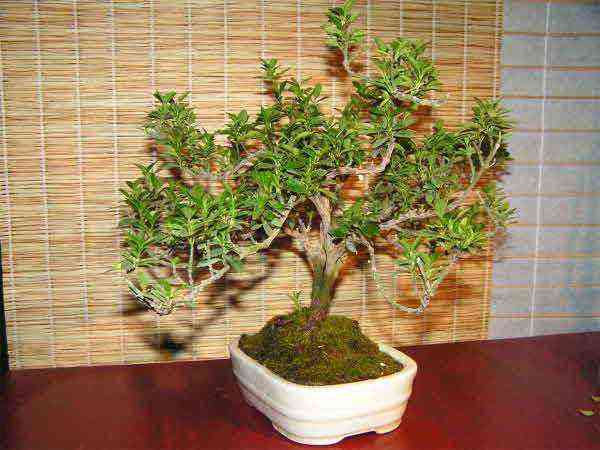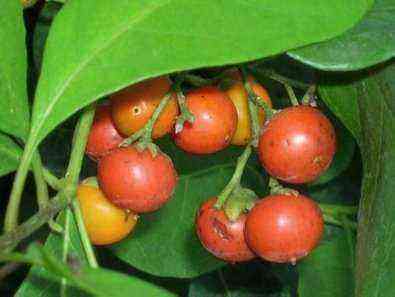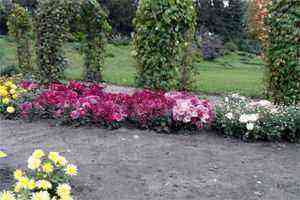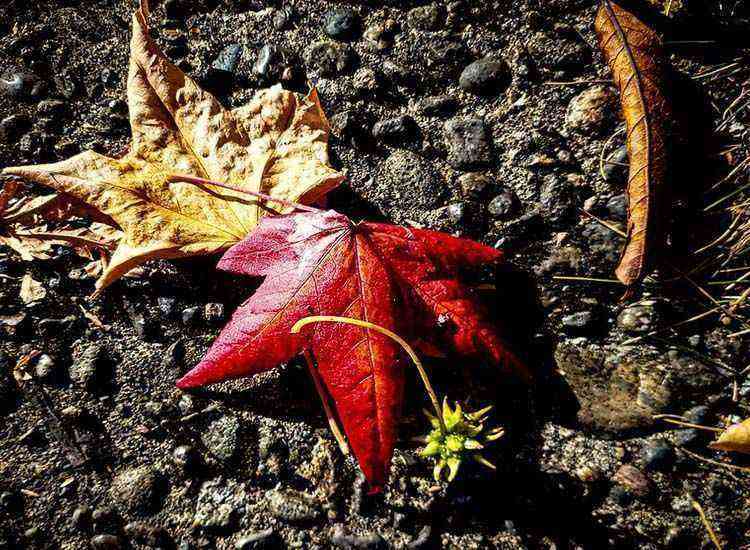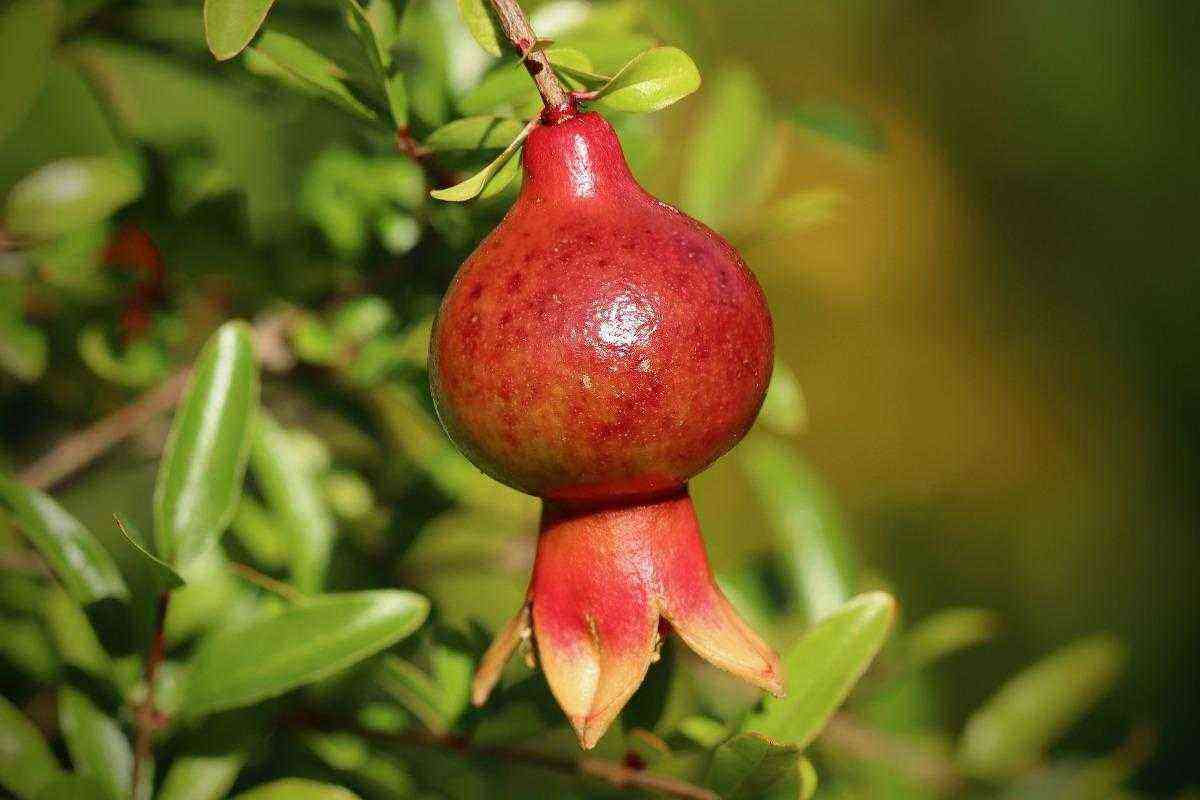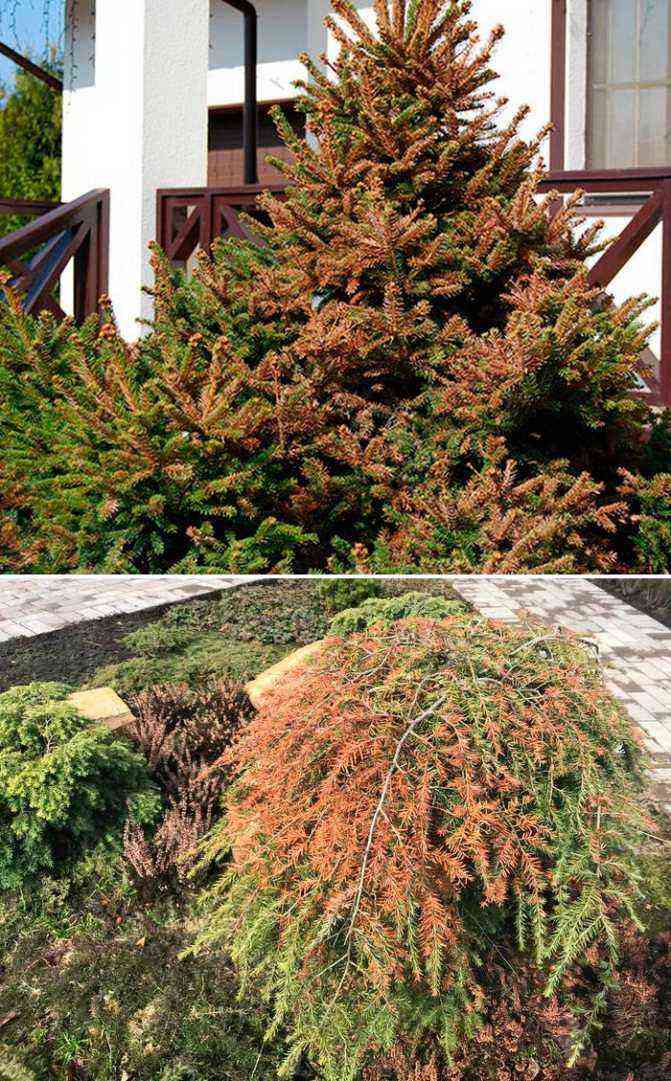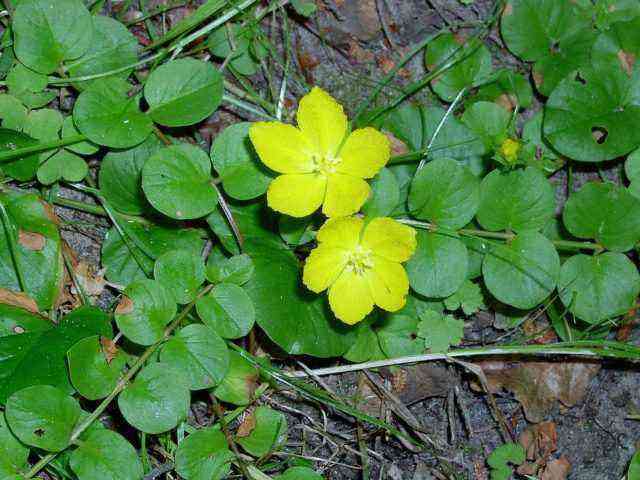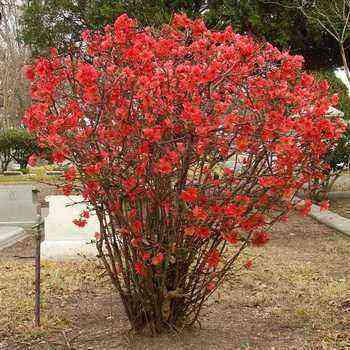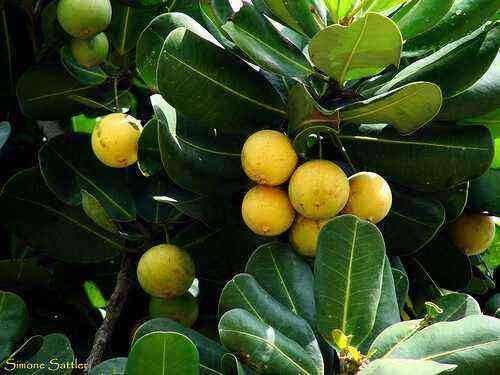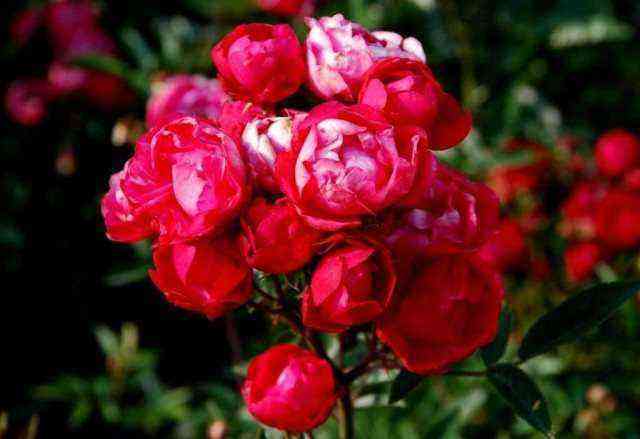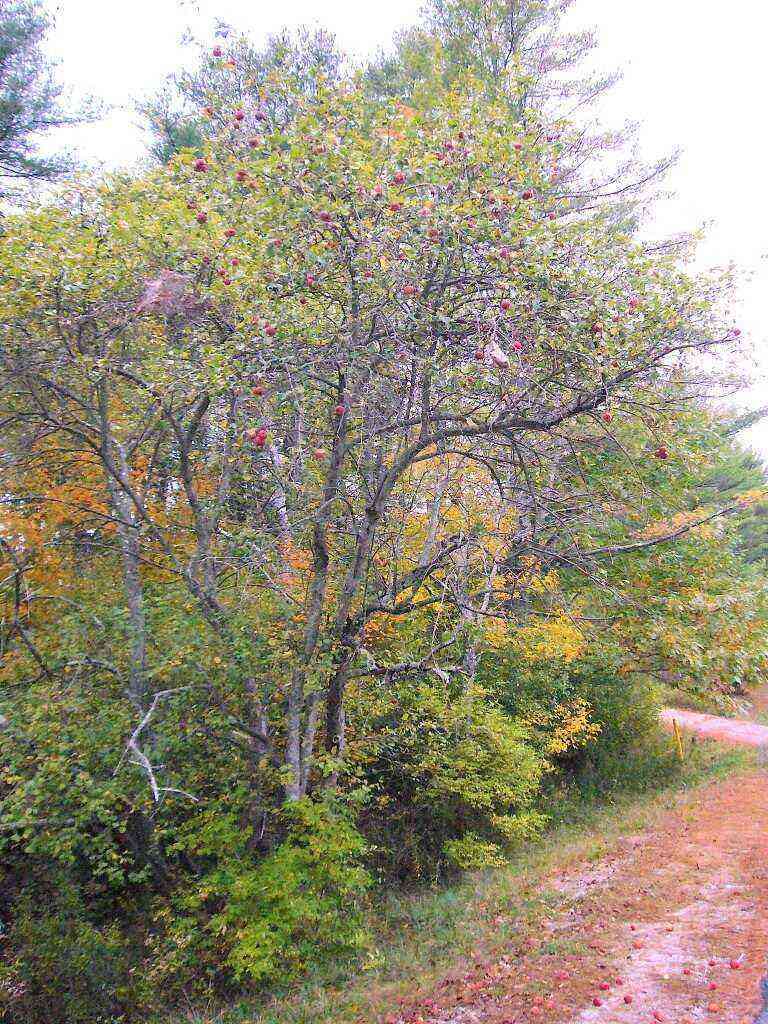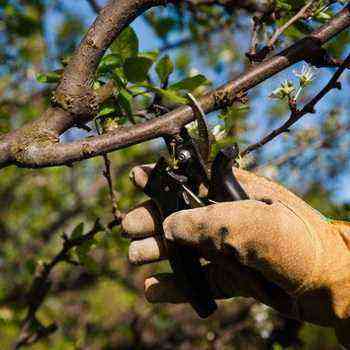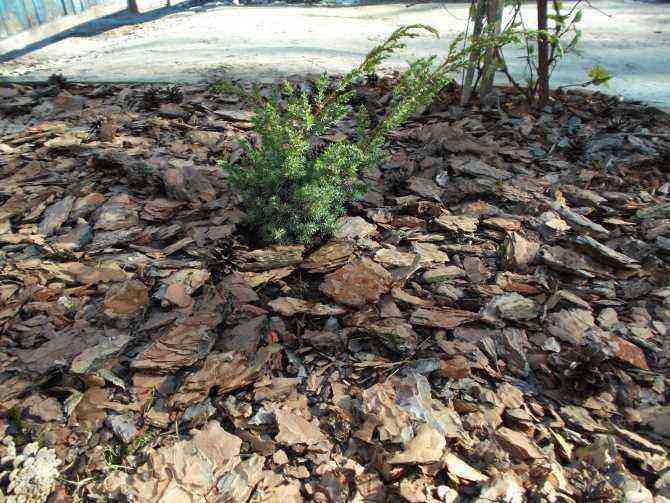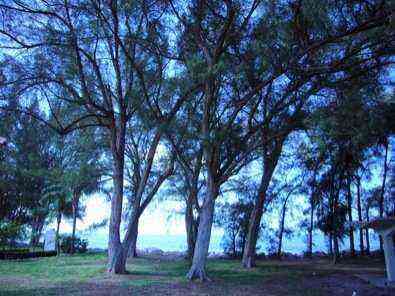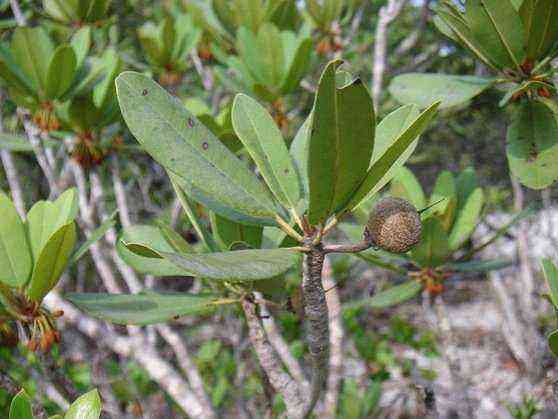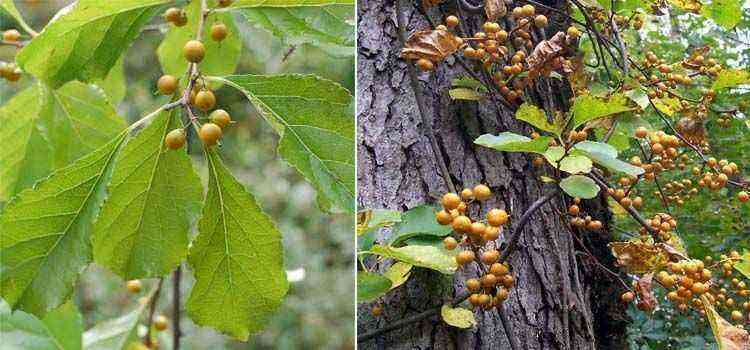Barberry belongs to the genus Barberry. The plant is a shrub, less commonly found in the form of small trees. The name of this plant has Arabic roots. The Arabic word “beiberi” is translated as “shell-shaped.” Barberry is appreciated by gardeners not only as a plant that decorates any site, but also for its useful properties. Various medicines are made from the bark and roots of the plant, and a delicious and at the same time very useful tonic tea is obtained from the berries and leaves.
When to plant barberry
It is possible to plant drums in open ground in autumn and spring. But in most of the territory of Russia, gardeners prefer to plant in the spring season. In this case, the risk of seedlings freezing out is practically zero. In autumn, barberry should be planted in open ground in early September. This will allow the seedling to take root prior to the onset of frost.
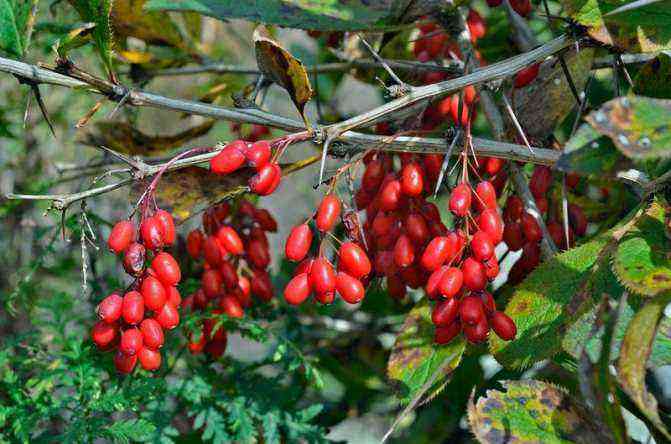

Barberry is best planted in spring
Features of spring planting
Barberry is unpretentious to the composition of the soil. Therefore, it can be planted in any area. However, there are a few basic rules to follow when planting a shrub:
- Barberry is planted early, as soon as the snow melts. Planting seedlings at this time is carried out because the shrub wakes up after wintering one of the first. Planting work must be completed before the buds swell.
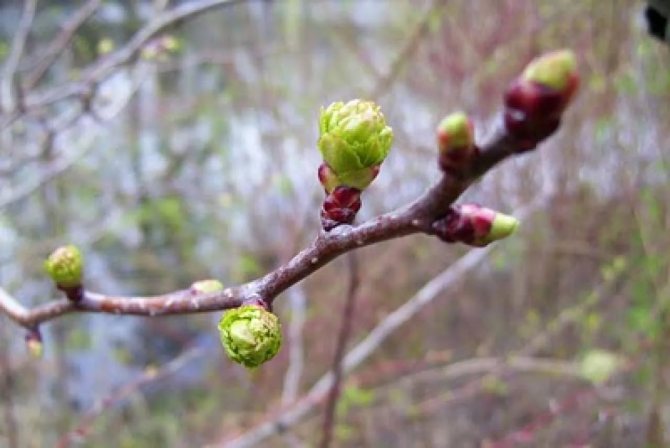
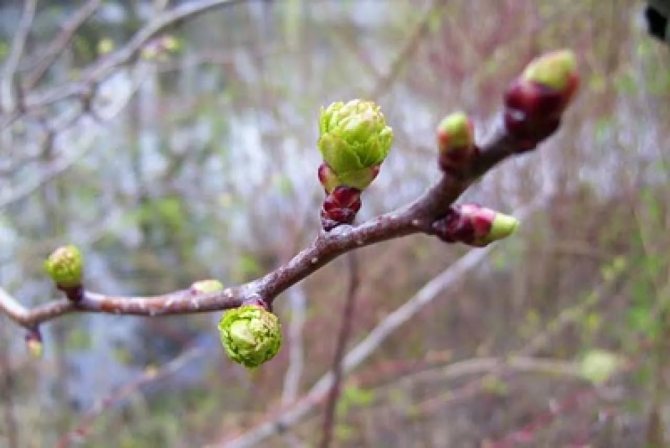
Barberry buds “wake up” early
- The area for planting shrubs should be well lit. Barberry can grow in the shade, but the yield is greatly reduced.
- To plant one barberry seedling, a planting pit 40×40 cm is dug.The depth is about 0,5 m.
- To create a barberry hedge, planting is carried out by the trench method: rows are made 40-50 cm deep, seedlings are placed in them at a distance of 0,5 m from each other.
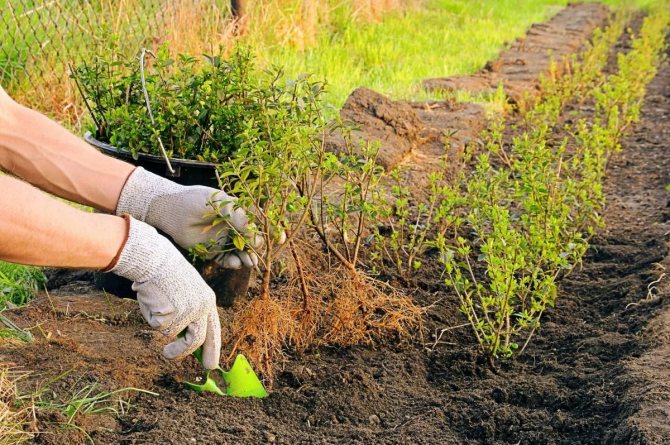

Saplings are placed at a distance of 50 cm from each other
- For all its unpretentiousness, barberry does not really like acidic soils. Therefore, when planting in such soil, it is better to add slaked lime (500 g per 1 m2).
- The shrub should not be planted near groundwater.
- When planting in loamy soil, peat must be added to the soil.
How to plant barberry correctly
In order not to harm the shrub, you need to properly plant:
- The planting hole or trenches are prepared 2 weeks before planting the shrub.
- Half a bucket of sand is poured onto the bottom of the pit. It has a beneficial effect on the root system.
- Then the pit is filled with a mixture: soil, mixed in equal proportions with humus and peat. You should also add superphosphate (30-40 g per 1 m2).
- The seedling is dipped into the prepared hole.
- The roots are sprinkled with earth, tamped.
- The plant is watered abundantly.
- The soil is mulched with straw, peat or sawdust.
- After planting, it is necessary to cut the seedling so that no more than 3-4 buds remain on the branches.
- In the first days after planting, the shrub must be protected from the sun.
Weather conditions also affect barberry planting. The plant is not planted outdoors on hot days. It is best to choose cloudy weather for landing.
Barberry care
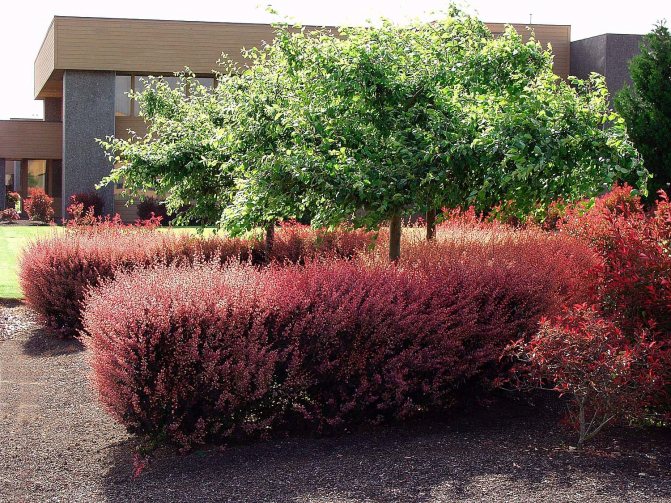

Growing a crop is no different from most traditional plants found in every garden or vegetable garden. Barberry care is represented by several simple and affordable procedures for everyone.
- Watering the barberry.
When watering the plant, stick to the principle – better less and less often. An overdose of water is detrimental to the roots, and the plant copes well with drought. Water an adult plant no more than 1 time a week, if the summer is rainy, forget about watering altogether. The exception is young seedlings, they need more moisture. Water the root plant with water at room temperature. - Weeding barberry.
A mandatory addition to watering is weeding and loosening the land around the barberry. Remove weeds regularly so that they do not take food away from the crop plant.

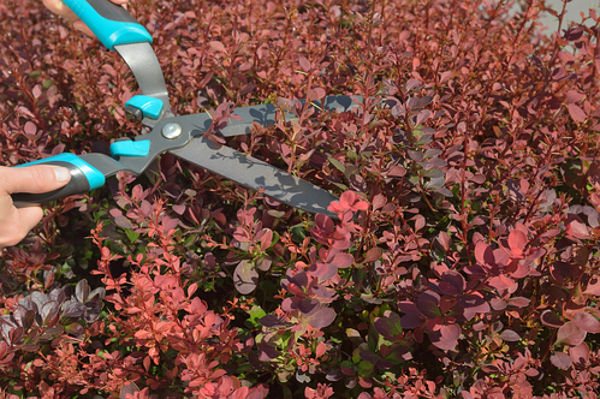
- Top dressing of barberry.
Apply fertilizer 3 or 4 times per season. The only exception is the first year of the plant’s life, the fertilizers introduced into the soil during planting will be enough for this period. To build up green mass, focus on nitrogen fertilizers, but if the barberry is planted for the sake of fruit, increase the proportion of phosphates and potassium. - Barberry trimming.
Carrying out formative pruning of barberry is a mandatory procedure for the care of the first years of a plant’s life, since without it the shrub will grow into an uneven and ugly bush. The timing of the procedure is early spring. In addition, do not forget about the rejuvenating pruning of barberry, every 10 years in late autumn, remove old shoots, stimulating the tree to grow new ones. In case of breakdowns and diseases of the shoots, carry out sanitary pruning of barberry as needed at any time of the year, except for winter.
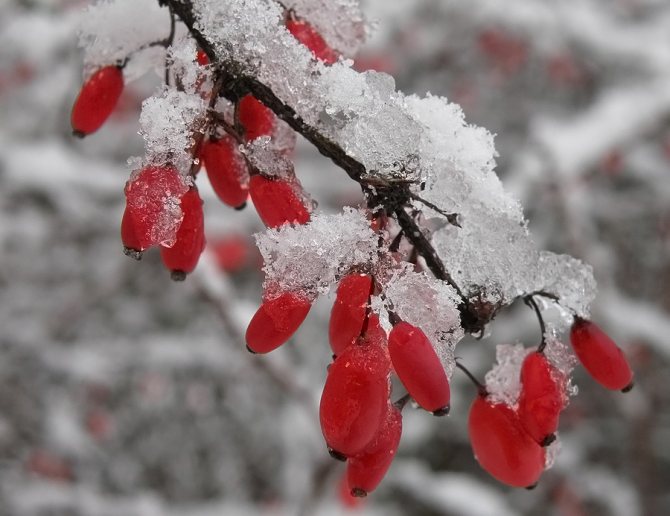
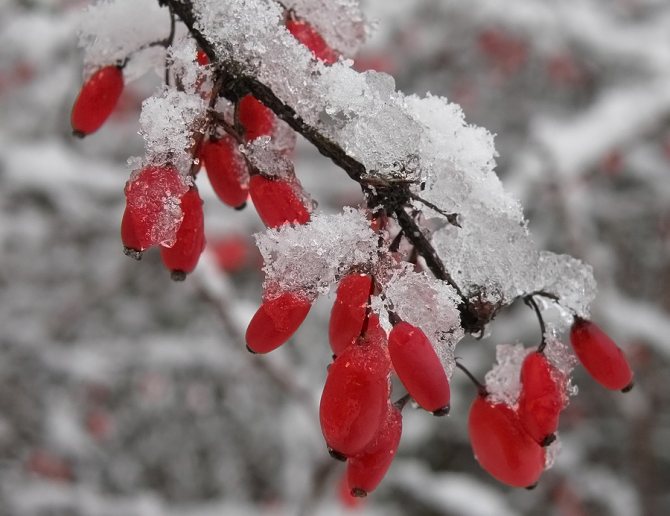
- Barber’s wintering.
Only young seedlings up to the third or fourth year of life need shelter for barberry for the winter. Carefully tie the barberry shoots with twine, put burlap on them, fill the voids with dry foliage or spruce branches. - Diseases of barberry.
To protect barberry from diseases or pest attacks, there is only one effective method: timely examination and application of preventive methods. - Reproduction of barberry.
There are two main methods of reproduction: the reproduction of barberry by seeds is complicated by low germination, but the reproduction of barberry by cuttings is popular among gardeners for its ease and efficiency. Bushes, whose shoots grow from the ground itself, can be propagated by division.
How to preserve seedlings before planting
Seedlings appear on the shelves of supermarkets or horticultural centers in January-February. Planting a plant during this period is not possible for most regions. The exception is Crimea, where shoots begin to bloom at this time. However, even if you buy a shrub at such an inappropriate time for planting, you can keep the seedlings alive and healthy.
- After purchase, part of the wrapping paper covering the branches is removed from the seedling.
- The roots of the plant are left in the package.
- The storage temperature of the seedling should not exceed 3oC. This is the temperature regime in which the plant is in hibernation. You can store seedlings on an unheated balcony. Also, the plant can be placed on the lower shelf in the refrigerator, designed for storing fruits and vegetables.
- In the event that the purchased seedling has leaves, it must be planted in a container and grown as a houseplant. The air temperature in the room should not exceed 22-25 ° C.
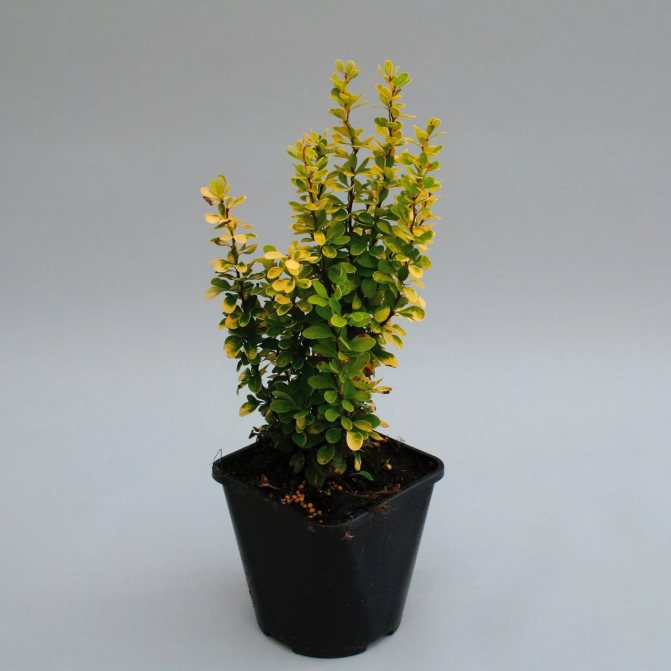
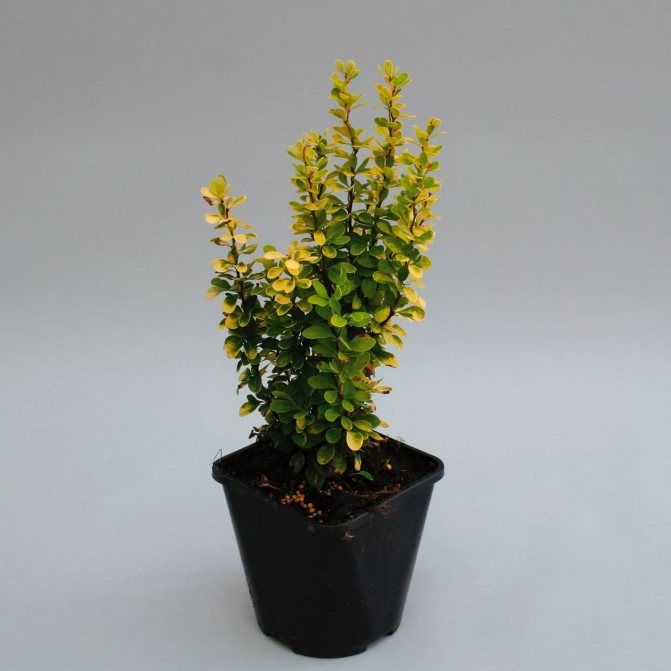
If the seedling has leaves, it is planted in a pot and grown as a houseplant.
Feeding
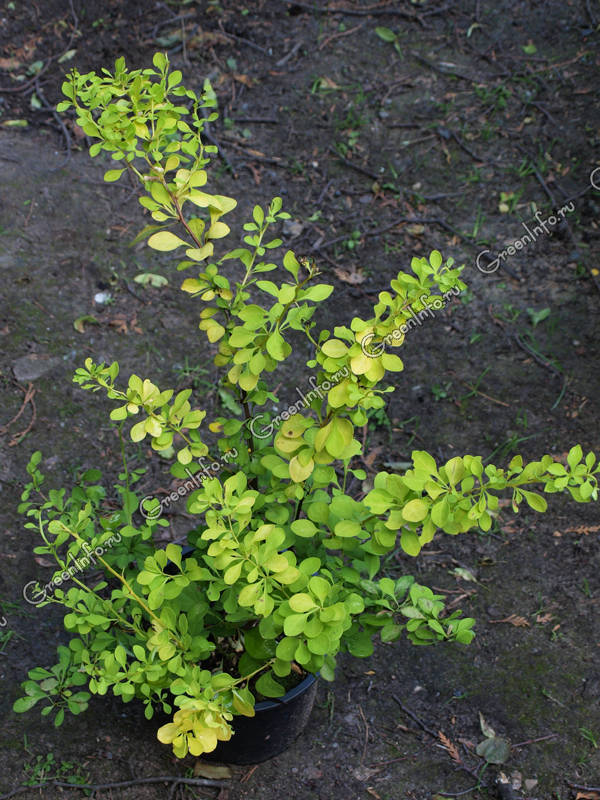
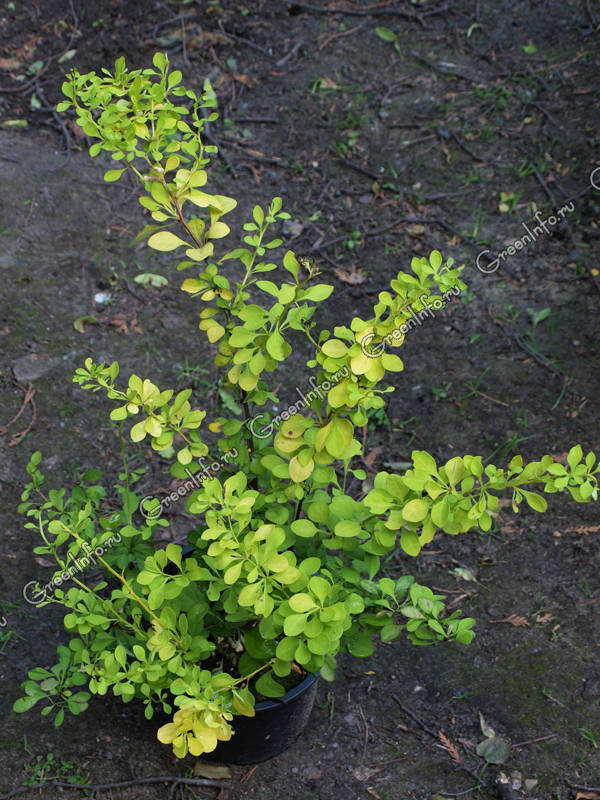
Barberry Tunberg Aurea
Starting from the second year after planting, barberry bushes require additional feeding. In the spring, nitrogen fertilizers are needed (20 g of urea per bucket of water), it is useful to water the bushes with slurry diluted 5-6 times, or bird droppings diluted 10 times. Then such dressings are carried out after 2-3 years. During summer dressings, especially for adult shrubs, before flowering, granulated complex fertilizers with microelements, for example, “Kemiru-Universal”, are applied. At the beginning of autumn, 15 g of superphosphate and 10 g of potassium fertilizer are scattered under each adult bush.
Planting shrub cuttings
Barberry is propagated by seeds or by cuttings. To do this, select strong elastic shoots that have appeared this year. They are cut and stored from autumn to spring in the refrigerator. Gardeners try to avoid unripe cuttings as they can rot.
Latest news
Aroma for the whole garden: 3 types of cotton wool, which has a pleasant sweet smell 3 simple remedies will help get rid of slugs in the garden Hydrangea varieties that bloom from July until the very cold
Lignified branches of barberry take root more difficult than young ones.
For grafting, use the middle parts of the branch. The diameter of the shoot should be about 5 mm. When cutting, the length of the cutting is from 8 to 10 cm. Gardeners divide the shoots into parts so that there are 2 nodes and 1 internode on the cutting. If the stalk is short, then 2 or 3 leaves are left on it.
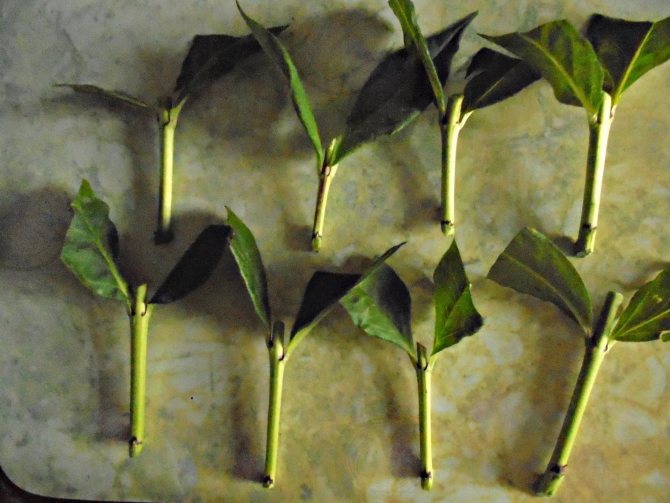
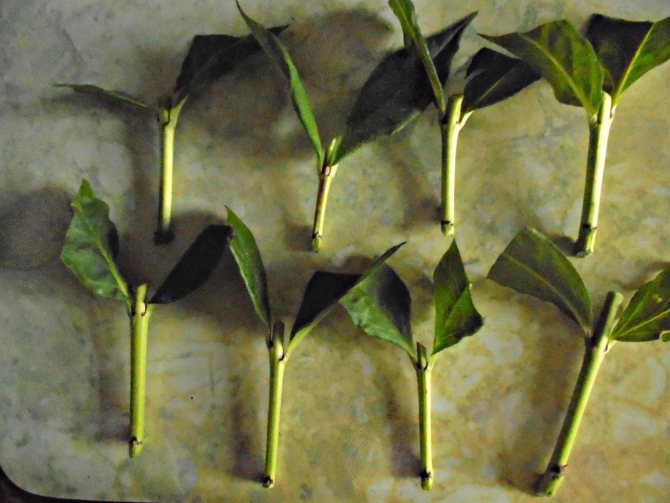
2-3 leaves are left on short cuttings of barberry
Correct cuttings of barberry
Correct grafting is done as follows:
- The top of the branch is cut horizontally.
- The lower cut at the shoot is made at an angle of 45o.
- The leaves at the top node are cut in half.
- The leaves on the lower node are removed completely. The kidneys are not affected.
- Then the cuttings are placed in a mixture of sand and peat (in a 1: 1 ratio) at an angle of 45 °.
- The distance between the cuttings should be at least 10 cm.
- The favorable air temperature in the room for rooting cuttings is 20–25 ° C.
- To maintain the required soil moisture, watering should be carried out 2 times a day.
After rooting the cuttings, the seedlings are grown in a greenhouse for 2 years.
Description of barberry: popular varieties and types
There are many varieties of barberry and each has its own unique characteristics. Gardeners choose varieties based on preference.
Some popular varieties are presented below.
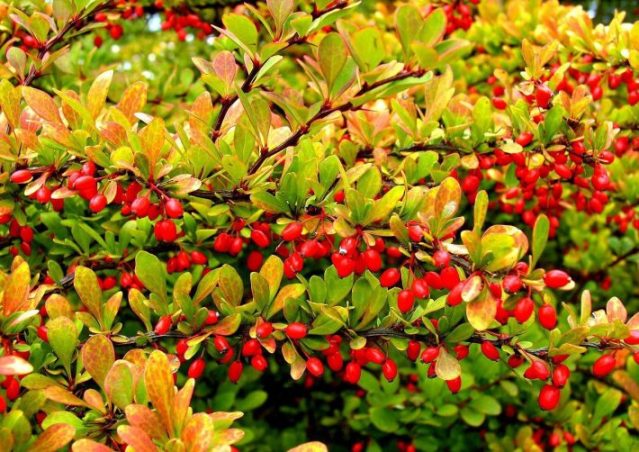

Common barberry – appearance
Barberry Common
The Latin name for this variety: (Latin Berberis vulgaris).
This is a thorny perennial shrub 2-3 m in height. The brown trunk and shoots have sharp thorns. The leaves are elliptical, 4,5 by 2,5 cm in size. The bushiness of the plant is high. Arcuate shoots, medium length. The shrub is fed by a highly developed root system with creeping roots located in the upper layer of the soil.
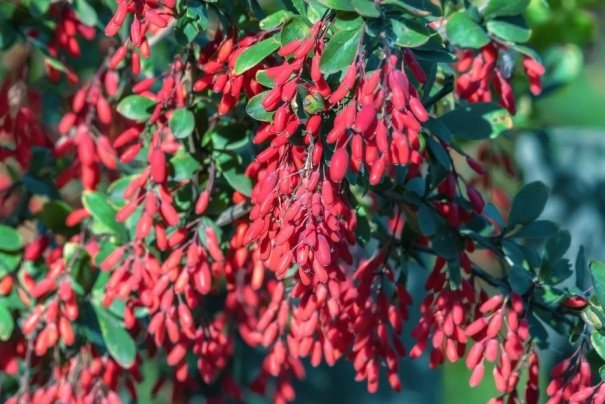

Scarlet and tart fruits of common barberry
In autumn, the green leaves of the barberry take on a burgundy, purple or fiery color. Blooms in spring for 2 weeks. The flowers are small, yellow in color.
The fruits are scarlet, sour and tart. The length of each berry is 2 cm, weight is up to 4 grams. The fruits are good for consumption.
Grown in southern and central Europe, in the North Caucasus.
For reference! Popular varieties “Juliana” and “Aureomarginata”.
Barbaris Tunberga
Grows in Japan and China. The height of the bush is 1,5 m. The leaves are yellow or bright red in spring and summer, and turn brown in autumn.
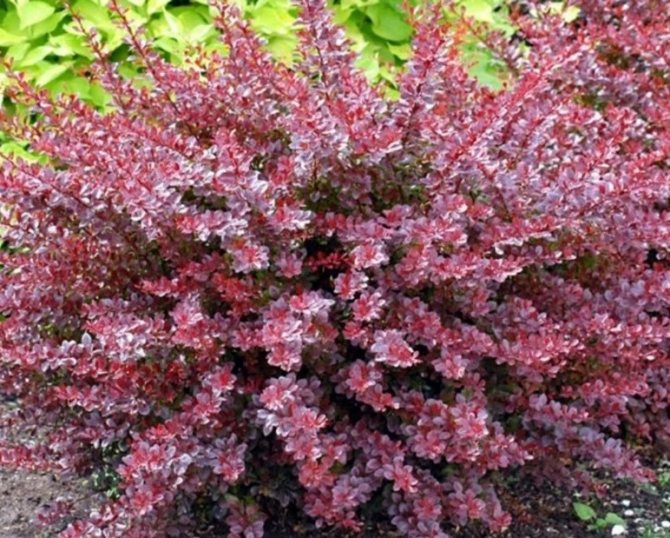
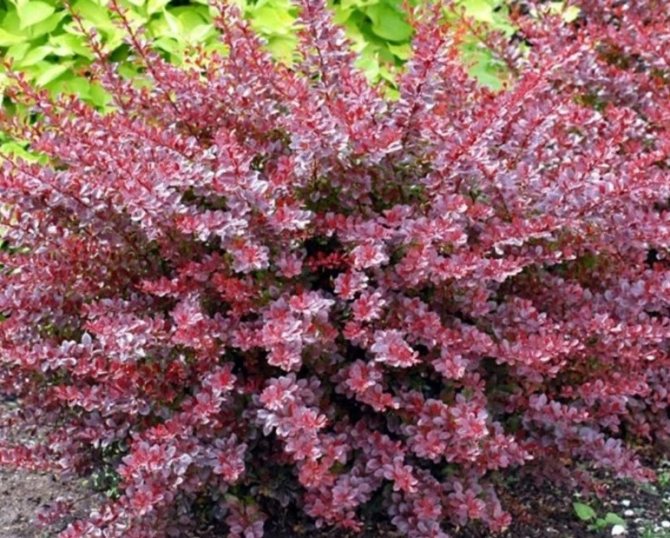
Barbaris Tunberga
The flowers are usually yellow with a red border around the edges. Blooms for 8-12 days. The bitter-tasting fruits are not used for food. The shrub is not afraid of drought and cold, undemanding to the soil.
For reference! The main varieties are: Atropurpurea, Aurea, Golden Ring, Bagatel, Nana.
Amur barberry
A less popular variety. The height of the bushes is 3,5 m.
It tolerates drought well, but freezes in extreme cold. The foliage is green in summer, the bushes are red-leaved in the fall. Blooms in late May.
For reference! Famous varieties: “Japonika” and “Orphea”.
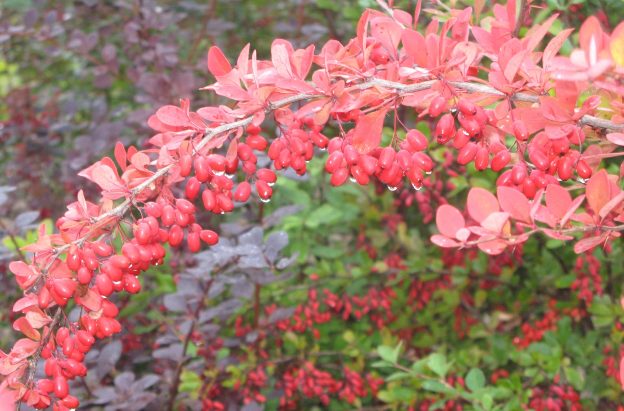
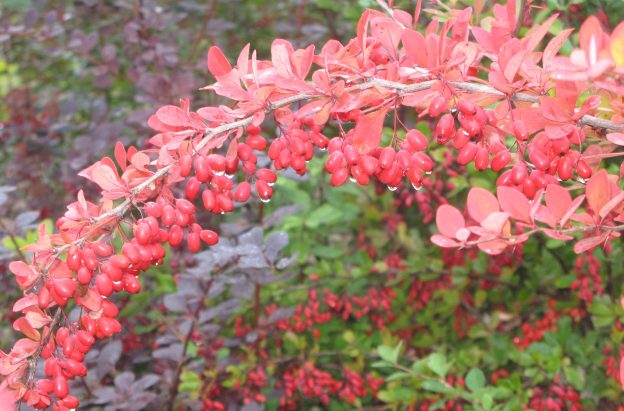
Amur barberry
Reproduction of barberry by dividing the bush during transplantation
By dividing the bush, the barberry is propagated in the spring. Before the buds swell, the bush is dug out. Carefully, so as not to damage the roots, they are divided into several parts. Then they are seated in holes or trenches. If there is no goal to get two bushes, then the plant, along with an earthen clod on the roots, is moved to a new place.
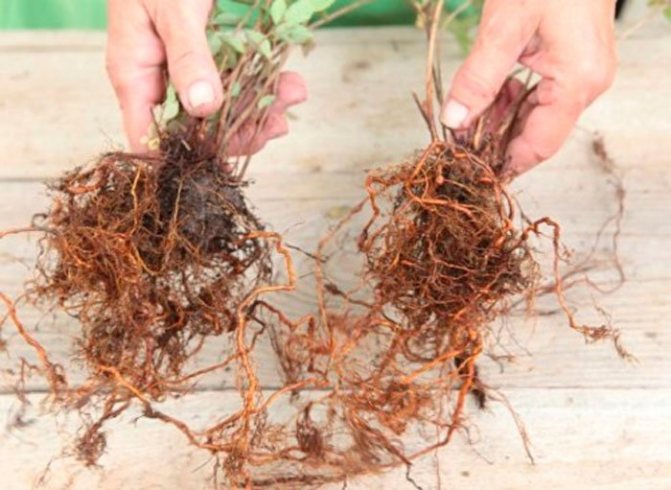

When transplanting, the barberry bush can be divided into two parts
Breeding methods in the Moscow region
There are several methods, and all of them are successfully applied in the middle lane:
Seeds
The best ripe fruits are selected for seed material. The bones are removed and dried. Processing with a weak solution of potassium permanganate will be beneficial.


The most suitable season for sowing is considered autumn before the onset of cold snaps. In spring, it can also be planted, but the process turns out to be more laborious, since within 2-4 months the seeds are stratified at a temperature of + 2 … + 5 ° C. The duration of the process depends on the variety.
Reference. Common barberry is stratified – 2 months, Thunberg barberry – 3 months, Amur – 3,5 months.
The seedlings have leaves, which means it’s time to order them. The gaps are left 3 cm in size. Within 2 years, the plants are grown without transplanting.
Cuttings
Plants inherit all parental qualities when using this method. Young individuals no more than 10 years old are chosen for propagation. In the morning, until the dew has dried, the shoots are cut. They are placed in water in a shaded place and cut into cuttings with a sharp tool. It is cut obliquely under the kidney and placed in water with a lower cut.
The soil in the greenhouse is prepared in advance. The site is covered with a mixture of rotted leaves, earth and compost and covered with sand. The height of the first layer is 10-15 cm, the second – 4 cm. The soil is compacted and well watered with water.
Cuttings are planted obliquely, placing the bottom cut to a depth of no more than 1,5 cm. Recommended spacing between cuttings – 5 cm, between rows – 7 cm. After planting, watered with water heated to 20-25 ° C, by sprinkling. Then the greenhouse is carefully covered to maintain a temperature of 20-25 ° C. The cuttings are sprayed several times every day. The rooting period is about a month. Then the plants begin to harden. After winter, barberry is transplanted into open ground.
Layers
For reproduction, several young branches are chosen from one plant, no more than 1 year old. They are placed in holes 20 cm deep and watered during the summer season. By the fall, the shoots develop their own root system. They are cut off from an adult bush and dug up.
By dividing the bush
The division of the bushes is done in early spring or autumn. First, the shoots are cut off, then the barberry is dug up and cut into slices in the place where the root collar is located. It is necessary to make sure that each part has roots and 2-3 shoots.
Self-seeding
The method consists in creating favorable conditions for the germination of fallen seeds and the development of seedlings. The recipe is simple – the soil should be regularly processed: fertilize, loosen, remove weeds and monitor moisture. In the spring the seeds sprout, in the fall the seedlings can be transplanted to a new place.
Plants neighbors for barberry
Bright and colorful barberry will perfectly fit into the design of any garden. He can be assigned a separate flower bed. Annual and perennial flowers, conifers of trees will become excellent neighbors on a personal plot for a shrub. Barberry also feels great in the neighborhood of thuja.
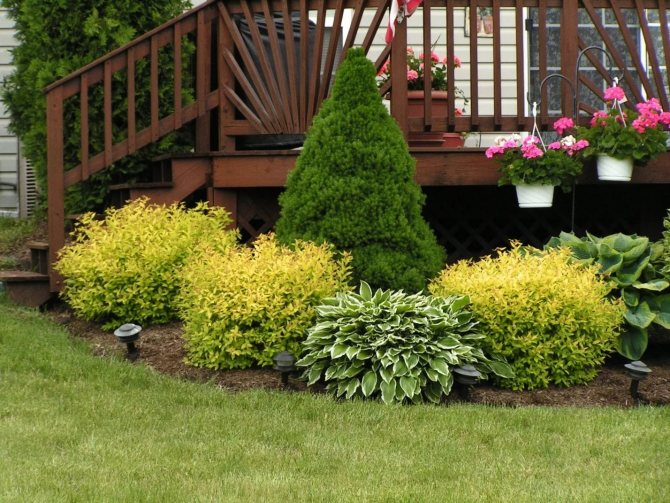
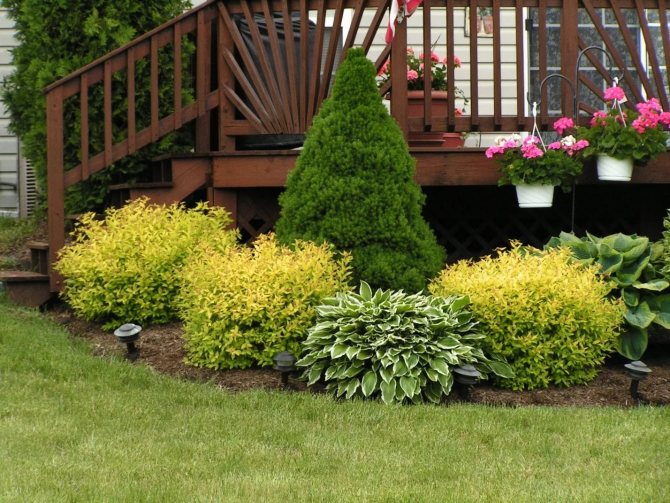
Barberry feels great next to deciduous and coniferous trees
Barberry – useful properties
Long before our era, barberry berries were used as an effective remedy for rejuvenation, blood purification, and treatment of many diseases. This is mentioned on clay tablets made by the ancient Assyrians.
Now the enormous value of barberry has been scientifically proven. The set of useful substances contained in it is able to remove toxins, cleanse the body, slow down the aging process, restore damaged cells, cope with inflammatory processes in the body, prevent cardiovascular diseases, and resist atherosclerosis.
And this is just a small list of the healing advantages of the “caramel tree”, which can not only give us health, but also bring a piece of beauty, harmony and charm into our lives.
Landing features in the regions
There are no differences in planting barberry in different regions of the country. But the difference in climate affects the choice of the variety and the care of the plants.
Barberry in Siberia
Although barberry is a frost-resistant plant, some species are less suitable for cultivation in Siberia. These are the Thunberg barberry, Korean barberry, whole-edge barberry. You can opt for ordinary barberry, Amur barberry, oblong barberry. For the winter, it is recommended to cover the young bush – along the edges with a spruce forest, and then, when it snows, make a snowdrift. Large plants are tied with twine, a box is installed, where dry leaves are poured. From above, the structure is wrapped in a nonwoven material. The soil around the plant is mulched.
Barberry in the suburbs
In the climate of the Moscow region, the culture feels good. It is only important to provide the bushes with a lot of light and non-swampy soil. Common barberry, Thunberg barberry, Ottawa barberry are excellent for growing in the region.
Video: growing barberry Thunberg
Barberry is one of the most unpretentious shrubs growing in Russia. It is safe to say that with proper planting and proper care, it will take root in any garden plot, delighting with a good harvest and a colorful appearance from year to year.
- Author: Tatiana Pleshakova
Photographer, copywriter. Work experience 8 years. Knowledge of English, German. Rate the article:
- 5
- 4
- 3
- 2
- 1
(0 votes, average: 0 out of 5)
Share with your friends!
Barberry care
Growing a crop is no different from most traditional plants found in every garden or vegetable garden. Barberry care is represented by several simple and affordable procedures for everyone.
- Watering the barberry.
When watering the plant, stick to the principle – better less and less often. An overdose of water is detrimental to the roots, and the plant copes well with drought. Water an adult plant no more than 1 time a week, if the summer is rainy, forget about watering altogether. The exception is young seedlings, they need more moisture. Water the root plant with water at room temperature. - Weeding barberry.
A mandatory addition to watering is weeding and loosening the land around the barberry. Remove weeds regularly so that they do not take food away from the crop plant.
- Top dressing of barberry.
Apply fertilizer 3 or 4 times per season. The only exception is the first year of the plant’s life, the fertilizers introduced into the soil during planting will be enough for this period. To build up green mass, focus on nitrogen fertilizers, but if the barberry is planted for the sake of fruit, increase the proportion of phosphates and potassium. - Barberry trimming.
Carrying out formative pruning of barberry is a mandatory procedure for the care of the first years of a plant’s life, since without it the shrub will grow into an uneven and ugly bush. The timing of the procedure is early spring. In addition, do not forget about the rejuvenating pruning of barberry, every 10 years in late autumn, remove old shoots, stimulating the tree to grow new ones. In case of breakdowns and diseases of the shoots, carry out sanitary pruning of barberry as needed at any time of the year, except for winter.
- Barber’s wintering.
Only young seedlings up to the third or fourth year of life need shelter for barberry for the winter. Carefully tie the barberry shoots with twine, put burlap on them, fill the voids with dry foliage or spruce branches. - Diseases of barberry.
To protect barberry from diseases or pest attacks, there is only one effective method: timely examination and application of preventive methods. - Reproduction of barberry.
There are two main methods of reproduction: the reproduction of barberry by seeds is complicated by low germination, but the reproduction of barberry by cuttings is popular among gardeners for its ease and efficiency. Bushes, whose shoots grow from the ground itself, can be propagated by division.
Preparation for winter
All young seedlings and seedlings of barberry at the end of autumn should be tightly covered with coniferous spruce branches or a layer of dry foliage… If the leaves are poured not on the ground, but on a fine mesh, then in the spring it will be easy to remove them, keeping the expanding buds. You need to start the shelter when, throughout the week, the temperature is set at -5-70 frost, and the soil freezes to a depth of 3-5 cm.It is important to protect immature shoots from excess dampness, soaking and damping, to protect from sudden temperature fluctuations and the formation of ice crust. Heat-loving varieties of Thunberg barberry and some Asian species at an early age should be wrapped for the winter with burlap, or thick kraft paper, on top with modern covering material (lutrasil, spunbond, etc.) and wrapped with rope so that the plant does not open in the wind. If you use only one non-woven material, then there will be increased air humidity under it, which is fraught with barberry. It is important that the shelter does not reach the ground and that the lower part of the crown is ventilated. On warm spring days, you should not be late with the removal of the shelter, which will limit the growth and development of ornamental shrubs.
